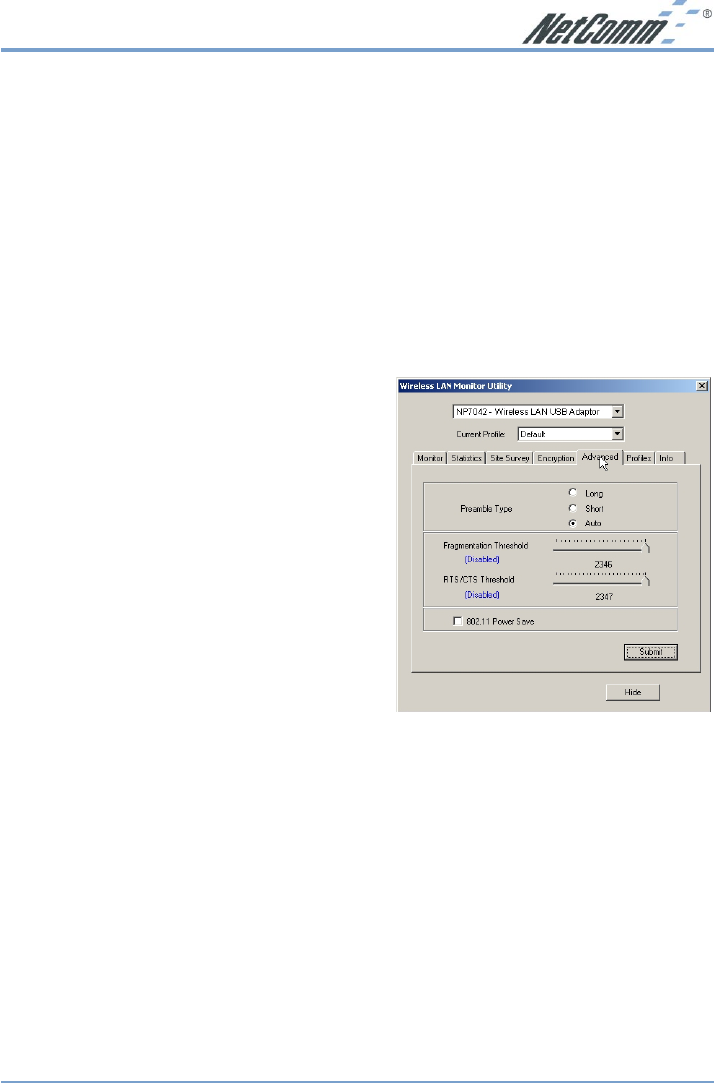
Rev.1 - YML654 www.netcomm.com.au
NP7042 - Wireless LAN USB Adaptor Page 19
Advanced
The Advanced screen shows the advanced settings of the Wireless LAN Card Utility, and it
includes Preamble Type, Fragmentation Threshold, and RTS / CTS Threshold.
Preamble Type: The preamble is to limit the packet size of the data transmitted.
It is recommended that the short preamble is selected when the
link quality is bad, thereby preventing wasted time when
resending any lost packets. The default setting is Auto.
Fragmentation Threshold: This option controls the way the transmitting packets will be
fragmented. If a packet is larger, in octets, than the threshold, the
packet will be split up, or fragmented, prior to being transmitted.
Once a packet is
fragmented, if a
portion of the
original packet is
corrupted in
transit, only the
corrupted portion
needs to be
retransmitted.
Throughput is
generally lower for
fragmented
packets, however,
because the packet
header consumes
RF bandwidth.
It is recommended
to fragment the packet when the link quality is bad, so as to
reduce the time taken to resend a lost packet.
RTS/CTS Threshold Defines a threshold for the number of packets that can be
received before the NetComm NP7042 - Wireless LAN USB
Adaptor will issue a Request to Send (RTS) packet. The RTS
packet is used to avoid data collisions on the WLAN. There are
some trade-offs to consider when setting this parameter. A small
RTS threshold will cause RTS packets to be sent more often,
thereby consuming bandwidth and reducing the apparent
throughput of the WLAN. The more often RTS packets are sent,
however, the quicker the WLAN can recover from interference or
data collisions. Refer to the IEEE 802.11b standard for more
information on the RTS/CTS mechanism.


















